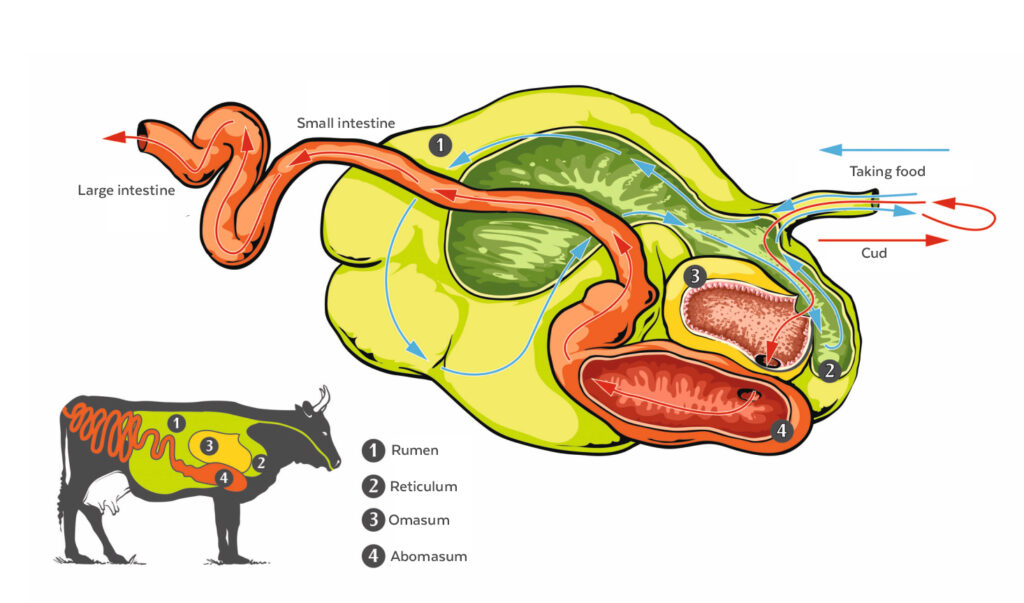Displaced abomasum (DA) is a common metabolic disorder in dairy cows that occurs when the abomasum (the fourth compartment of the cow’s stomach) moves out of its normal position and becomes displaced. DA is most commonly seen in high-producing dairy cows, particularly in the first few weeks after calving.

The abomasum is normally located on the right side of the cow’s abdomen, but in cases of DA, it can become displaced and move to the left side of the abdomen, causing a blockage of the digestive system. There are two types of DA: left displacement of the abomasum (LDA) and right displacement of the abomasum (RDA). LDA is more common than RDA.
Symptoms of DA in dairy cows may include:
- Decreased milk production and appetite
- Reduced fecal output or constipation
- A decrease in body condition score
- Swelling on the left or right side of the cow’s abdomen
- Decreased rumen contractions
- Reduced milk fat percentage and an increase in milk protein.
The exact cause of DA in dairy cows is not entirely clear, but risk factors include high milk production, a diet that is high in concentrates and low in roughage, and a drop in blood calcium levels (hypocalcemia) after calving.
Risk factors:

- High milk production: cows that produce a lot of milk are at higher risk of developing DA. This is because high milk production can cause a reduction in appetite, leading to a decrease in the amount of roughage consumed, which can lead to digestive problems.
- Low fiber diet: a diet that is low in fiber and high in concentrates (such as corn or barley) can also increase the risk of DA. This is because a low fiber diet can cause the cow’s digestive system to slow down, leading to the formation of gas and bloating, which can contribute to DA.
- Poor body condition: cows that are in poor body condition, particularly those that are overweight, are at higher risk of developing DA.
- Calving: cows that are close to calving or have recently calved are at higher risk of developing DA, particularly if they experience complications during calving.
- Genetics: some breeds of dairy cows are more prone to DA than others, such as Holstein cows.
Diagnosis of DA in dairy cows usually involves a physical examination by a veterinarian, as well as other diagnostic tests such as ultrasound or blood tests. Treatment typically involves surgery to reposition the displaced abomasum and restore normal digestive function. In some cases, additional treatments may be necessary, such as antibiotics to prevent infection or intravenous fluids to correct dehydration.

Prevention of DA in dairy cows includes proper feeding management, particularly during the transition period around calving, and monitoring the cow’s body condition score and milk production. In addition, cows at high risk of developing DA may benefit from dietary supplements or medications to reduce the risk of hypocalcemia and other metabolic disorders. Regular veterinary check-ups and early intervention are important for the successful management of DA in dairy cows.
Dasan’s feed products are highly effective, enabling animals to maintain their body condition score and produce more milk and meat in accordance with their genetic potential, thereby maximizing the return on investment for our farmers. Dasan’s products are built on a solid foundation of well-established products from top-quality suppliers, supplemented with innovative and novel ingredients.

